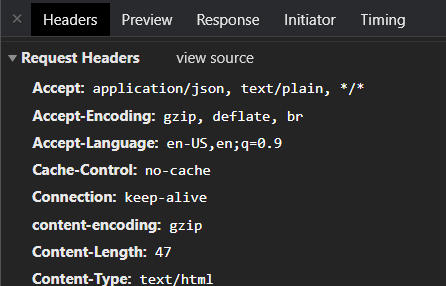Gzip a File in the Browser Before Uploading
Gzip in browser before uploading to S3
Hullo Everyone! Promise y'all all are fine and taking care of yourself and your families. It is very important to follow the SMS rule S-Sanitize, Thousand-Masks and S-Social Distance. Wish anybody a healthy life.
And so this blog is about the fflate library and how easily it helps to gzip the content from the front as well as the back end.
Customers desire things faster now than e'er before in our ever connected, ever-on world.This is the reason companies such as amazon are introducing drone services for faster deliveries, or same 24-hour interval deliveries.The same goes for digital. If you offer a product or service, your customers look to accept it, see results apace at whatsoever fourth dimension they delight.
Coming on to online educational applications or blogging platforms where we have to store huge amount of write ups in the server. Here comes the pain of downloading and uploading such huge contents while working. So we demand an optimized solution for this problem.
One solution here is the information compressions which makes the application many times lightweight and optimizes the network calls and minimizes the uploading and downloading content speed.HTTP pinch is a adequacy that tin be built into web servers and web clients to improve transfer speed and bandwidth utilization.The nigh common compression schemes include gzip and Deflate
There are many libraries similar pako,tiny-inflate and UZIP.js that hepls in achieving compression and decompression just fflate is multiple times more lightweight. Fflate supports high-speed ZIP compression and decompression for an extra 3 kB. In fact, the compressor, in synchronous mode, compresses both more quickly and with a higher compression ratio than most compression software (even Info-Nil, a C programme), and in asynchronous mode it can utilize multiple cores to achieve over 3x the performance of any other utility. Fflate is the fastest, smallest, and most versatile pure JavaScript pinch and decompression library in existence. Information compressed by fflate can exist decompressed by other tools, and vice versa.
Fflate takes the brilliant innovations of UZIP.js and optimizes them while calculation direct support for GZIP and Zlib data. And different all of the above libraries, it uses ES Modules to allow for partial builds through tree shaking, meaning that information technology tin can rival fifty-fifty tiny-inflate in size while maintaining fantabulous operation. The end consequence is a library that, in total, weighs 8kB minified for the entire build (3kB for decompression but and 5kB for compression only), is about 15% faster than UZIP.js or upward to 60% faster than pako, and achieves the same or improve pinch ratio than the balance.
It is a library which can be easily used in the frameworks like Node.js , Angular , React and more. Its unproblematic and easy methods make information technology more easy to utilize.
Using strings is easy with TextEncoder and TextDecoder:
const enc = new TextEncoder(), dec = new TextDecoder(); // Here you lot tin can pass your html as a string and process information technology const buf = enc.encode('How-do-you-do globe!'); // The default compression method is gzip // Increasing mem may increase functioning at the cost of retentiveness // The mem ranges from 0 to 12, where iv is the default const compressed = fflate.compressSync(buf, { level: 6, mem: 8 }); // When you need to decompress: const decompressed = fflate.decompressSync(compressed); const origText = dec.decode(decompressed); console.log(origText); // Hello world! At that place are two different means compression tin be done in HTTP. At a lower level, a Transfer-Encoding header field may indicate the payload of a HTTP message is compressed. At a college level, a Content-Encoding header field may indicate that a resource being transferred, cached, or otherwise referenced is compressed. Compression using Content-Encoding is more than widely supported than Transfer-Encoding, and some browsers do non advertise support for Transfer-Encoding compression to avert triggering bugs in servers. Read more than about http compression here Http Compression
url: the url to upload your compress information data: the compressed data role upload(url, data) { return axios({ method: "put", headers: { 'content-type': 'text/html', 'content-encoding' : 'gzip' }, url, data, }) } For number of words 4302 the content lenght without gzip is 880991 and with gzip is 10557. So you tin meet 83 time reduction which is awesome. The asking header for case

This is how the payload looks like subsequently later compressing the html string.

Follow the documentation of fflate here for better usage and agreement . Documentation
At terminal keeping up at pace is more important in todays world and if the output is taking less time so the customers or users are more impressed and happy to use our application. A network performing at optimum speed is not only essential for business organization success, merely as well digital transformation. Without a fast and agile network, digital transformation efforts would stop entirely causing your business organization to fall behind.
Source: https://simranraj8.medium.com/gzip-in-browser-before-uploading-to-s3-c171ba706e1f
0 Response to "Gzip a File in the Browser Before Uploading"
Post a Comment